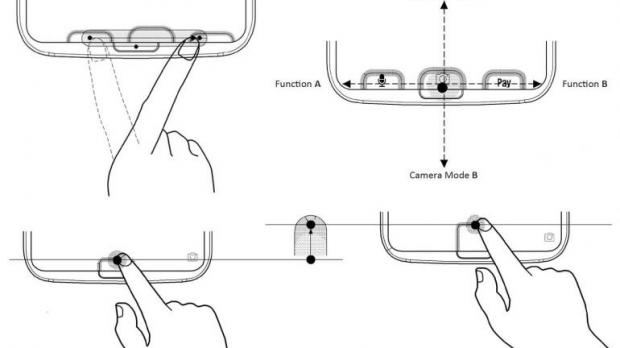Samsung is one of the companies that might be investing in fingerprint sensors integrated into the screen, and if a new patent gets the green light, there’s a chance the South Koreans go for a completely new approach.
Instead of embedding the full sensor into the display, Samsung could adopt a design that puts only part of the reader under the glass, which in its turn comes with several benefits.
First and foremost, a fingerprint sensor that’s only partially integrated into the display aligns with Samsung’s attempt to increase the screen to body ratio. The Galaxy S10 will likely retain a small bezel at the bottom of the screen, and this is where just a small part of the sensor will be placed.
The rest will be installed under the display, giving users options like adjusting its shape or hide it completely to increase the screen estate.
Gesture support
Furthermore, it looks like Samsung is aiming to give users more choices in terms of actions that can be performed from this button. A physical button can support gestures, while pressing the virtual one embedded into the screen could bring additional features like launching apps, the camera, or going to the home screen.
The patent indicates that Samsung could achieve a screen to body ratio of nearly 90 percent using this approach, up from 84.2 percent on the Samsung Galaxy S9.
As usual, a patent is by no means a solid indication that a specific feature would be introduced, but with fingerprint sensors embedded into the screen becoming a more widely-adopted idea, it makes sense for Samsung to explore various approaches.
The Galaxy S10 is projected to see daylight in early 2019, and this is very likely to be the first model featuring a fingerprint sensor embedded into the glass. The Galaxy Note 9 due in the summer will skip it, instead going for a reader more traditionally placed on the back.

 14 DAY TRIAL //
14 DAY TRIAL // 
